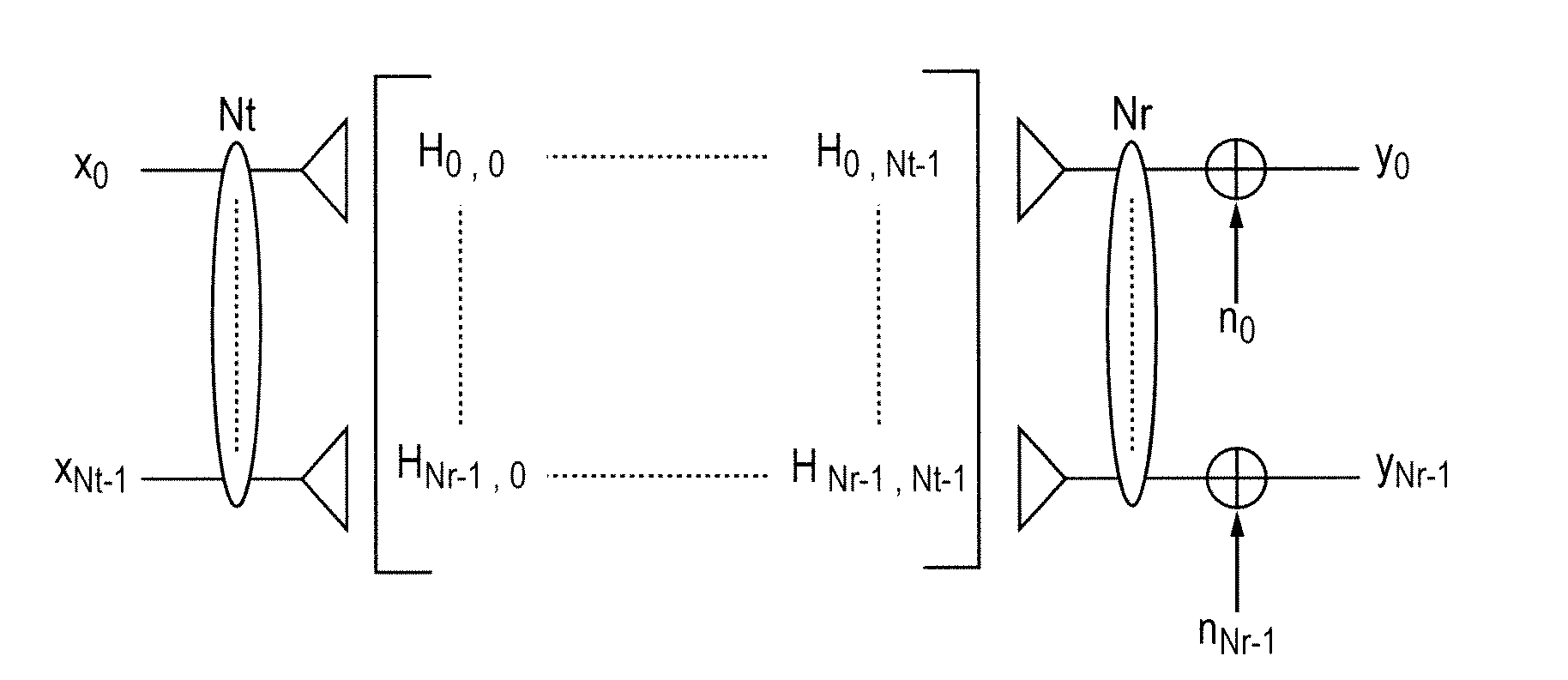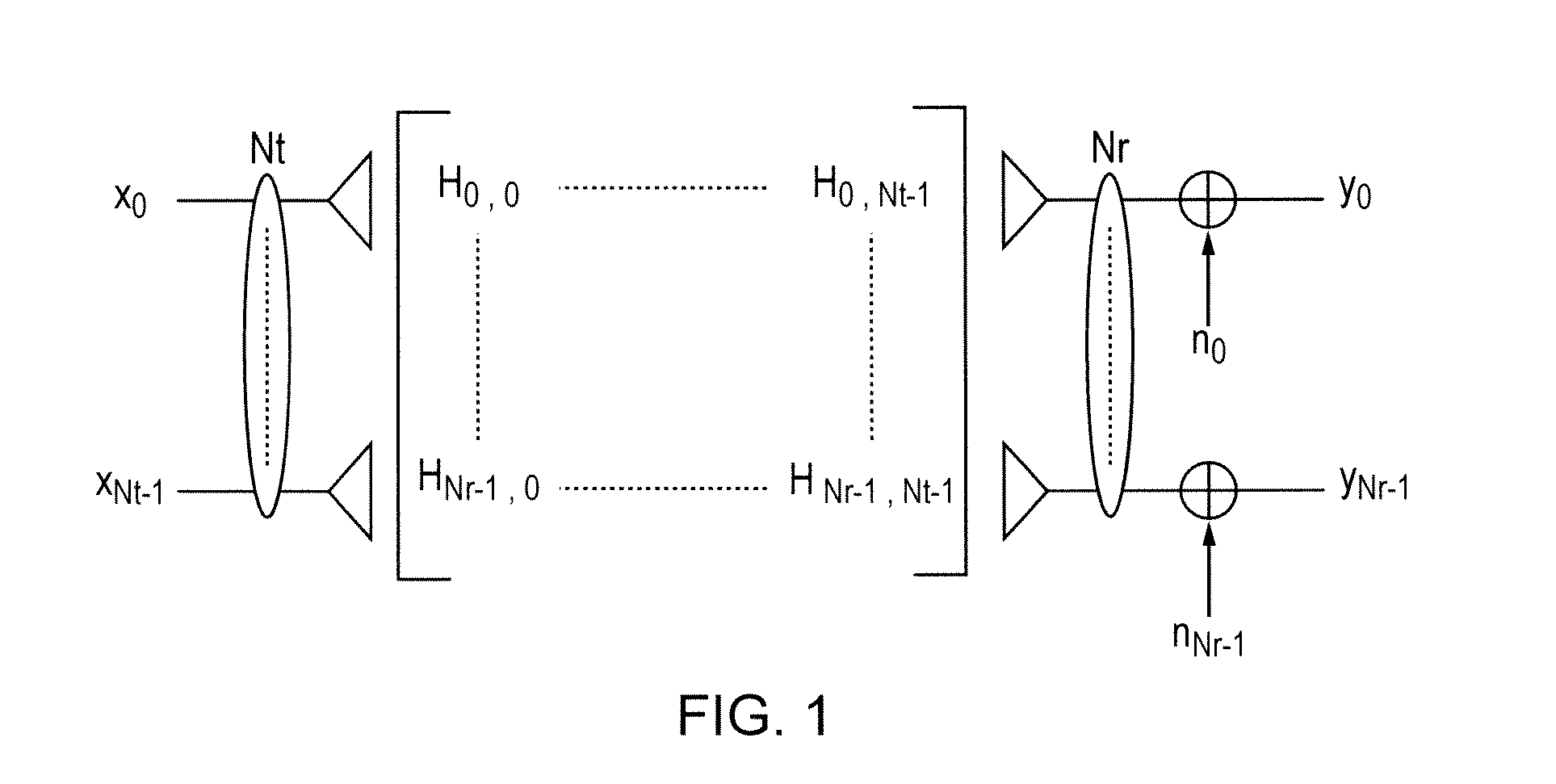MIMO wireless communication system
a wireless communication system and wireless communication technology, applied in the field of wireless communication systems, can solve the problems of limiting performance, inability to provide the maximum data throughput of the mimo channel, and still be affected by adjacent cells, so as to reduce interference, reduce interference, and high inter-cell interference.
- Summary
- Abstract
- Description
- Claims
- Application Information
AI Technical Summary
Benefits of technology
Problems solved by technology
Method used
Image
Examples
first embodiment
Interference Mitigation Precoder V0 Selection Based on SVD
[0128](a) The default state for the network is as shown in FIG. 1, but with UEB connected to eNBA and eNBB causing strong interference (in other words, prior to handover of UEB). By use of reference signals in TM9 of Rel.10 TD-LTE, eNBA has obtained channel knowledge on HAB, and eNBA stores this knowledge. While UEB is connected to eNBA (before Handover), eNBA can detect the SRS from UEB to estimate the uplink channel. Since in TDD, the uplink and downlink channels can be assumed to be similar, this estimate is valid for the downlink channel HAB.
[0129]The channel HAB is subjected to Singular Value Decomposition (SVD) at eNBA to produce the following matrices of U, D and V, where U denotes the left singular matrix and D the diagonal, singular value matrix. As the channel HAB is asymmetric, the right singular matrix contains signal space matrix Vs and null space matrix V0.
HAB=U·D·V
V=[VsV0] (3)
[0130]Under normal operation, eNB...
second embodiment
Interference Mitigation Precoder V0 Selection Based on Codebooks
[0140]The embodiment is useful for lower complexity eNBs such as Femto eNBs, which cannot be tasked with carrying out SVD. The Rel.10 TD-LTE system will use TM9 user specific signaling and channel reciprocity to obtain channel knowledge at both eNB and UE ends. However the system reverts back to codebook based transmission mode 4 (TM4) for actual pre-coded data transmissions.
[0141](a) Again the default state for the network is with UEB connected to eNBA and experiencing strong interference from eNBB. The channel knowledge is available at both ends; however, the system has reverted to codebook based PMI mode (TM4) and uses these PMI pre-coders. UEA has indicated the best pre-coder Vs (from the codebook) to eNBA and this is used in pre-coding. Amongst the methods for choosing the pre-coder Vs, the UE can look for maximizing capacity as depicted in eqn (4), iteratively checked for all pre-coders Vn in the codebook. When th...
PUM
 Login to View More
Login to View More Abstract
Description
Claims
Application Information
 Login to View More
Login to View More - R&D
- Intellectual Property
- Life Sciences
- Materials
- Tech Scout
- Unparalleled Data Quality
- Higher Quality Content
- 60% Fewer Hallucinations
Browse by: Latest US Patents, China's latest patents, Technical Efficacy Thesaurus, Application Domain, Technology Topic, Popular Technical Reports.
© 2025 PatSnap. All rights reserved.Legal|Privacy policy|Modern Slavery Act Transparency Statement|Sitemap|About US| Contact US: help@patsnap.com



